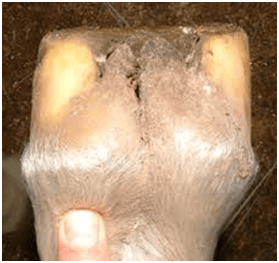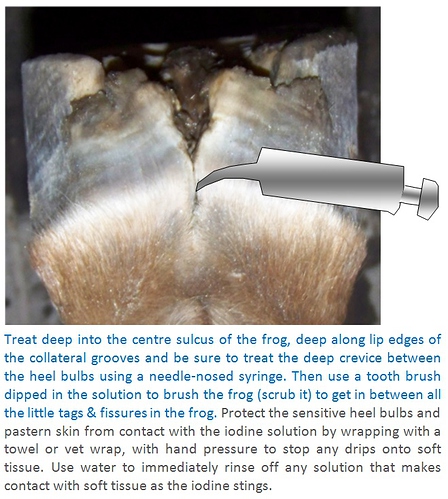I started typing this on my phone and decided to switch.
It’s been a long saga. I’ve owned this horse for 7 years. I bought him at a time when I wasn’t capable of training him myself due to some issues related to my back and hips, as a 5 year old. He’s an ASB sport horse. I had him with an ASB trainer after having some negative interactions with two trainers regarding him (a third did love him, but I had to leave the area…boo!)
So, he went into ASB training briefly, and that’s where I think the root of our issues started. His foot literally never smelled, but as the foot got taller (as ASB trainers are wont to prefer) and the heel bulbs crushed, a hole actually showed up in the back of the foot. Having never seen a thrush like that, I was baffled (I’m used to seeing it show up as the normal under-foot ick).
He was still an ASB hunter, so he wasn’t ever saddleseat, but they do still prefer a longer foot, and I wasn’t game. So I took him out of saddlebred training, found yet another dressage trainer for riding/training while I had hip surgeries, and then the dressage farrier got a hold of him. Feet looked so much better almost immediately but I think the thrush was just lurking in there underneath. That trainer lost her barn, so eventually I bought my own facility (almost literally just for this horse) and went with another farrier.
Literally no one has flagged the heel bulbs. Seriously. I’m the one who kept looking at them going…ummmm…“nah, this isn’t right”.
And he was getting more and more sensitive for shoeing. He was never a very patient guy, but he’s generally pretty compliant, and he would yank his foot out of your hand and rear and carry on for nailing, telling me something was going on in the foot, but my CJF farriers kept telling me “he’s fine, it’s all behavioral”. Which - sure, there’s a behavioral component to it too, but he is the horse I would pick hooves for in the stall or pasture with him loose prior to this, so the reaction seemed a bit extreme. Then it was “he must have navicular now” (which would surprise me tbh) and can’t be barefoot.
Feet are not my area of expertise, but none of this seemed right. As I mentioned, I’ve taken a few courses and I’ve read a lot, but most of my experience with feet has been just asking farriers questions over the last 30 years. Soooooo, finally this year I happened to think “maybe there’s some thrush in there” and squirted some Groom’s Hand (I think that’s what it’s called? It’s got that cool WD-40 like sprayer on there) in there and treated the whole crack with artimud. While he was extremely resistant to that at first, things seem to be sealing up and he’s letting me poke around the foot more. But I’d get it cleared up, and then it would show up again. His stall, when he is in it, is immaculate and he is not a muck-loving horse. He is in a track system that is 1/2 surfaced, so his feet should be pretty dry.
So then I thought maybe it’s a really DEEP case of central sulcus thrush that we’ve just never cleared up fully which called into question the supposition that he always needs shoes and that it’s navicular etc. etc.
Last cycle, I noticed a little dishing near the end (even before we pulled shoes) and mentioned it to the farrier, but she just kinda said “eh, it’s normal”. This cycle, I thought to myself, ok, if it’s the thrush, why don’t we try to let the foot decontract since he’s not doing much right now other than wandering around the track. So we pulled the shoes, and 3 weeks in, I see more dishing and I’m thinking…nah…can’t be right.
So - yes, I feel so badly for him. He’s been trying to let me know and I keep poking at the professionals but no one wants to be that client that loses their farrier because they ask the wrong questions.

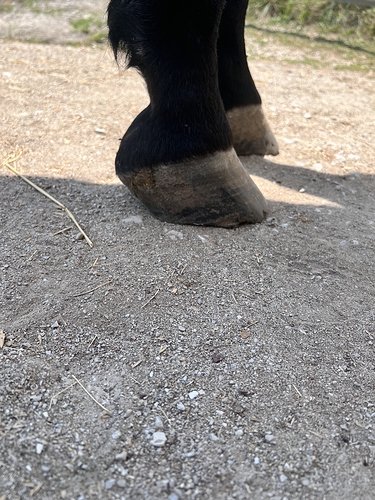
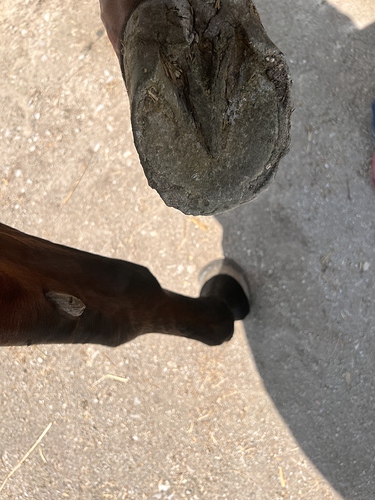
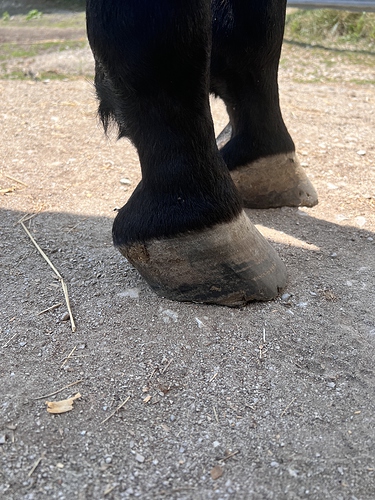
 ) of the frog marked. For sure, no vertical height can come off the toe, this is a horizontal length issue, not vertical. The heels are both - removing excess vertical height will also move them back.
) of the frog marked. For sure, no vertical height can come off the toe, this is a horizontal length issue, not vertical. The heels are both - removing excess vertical height will also move them back.